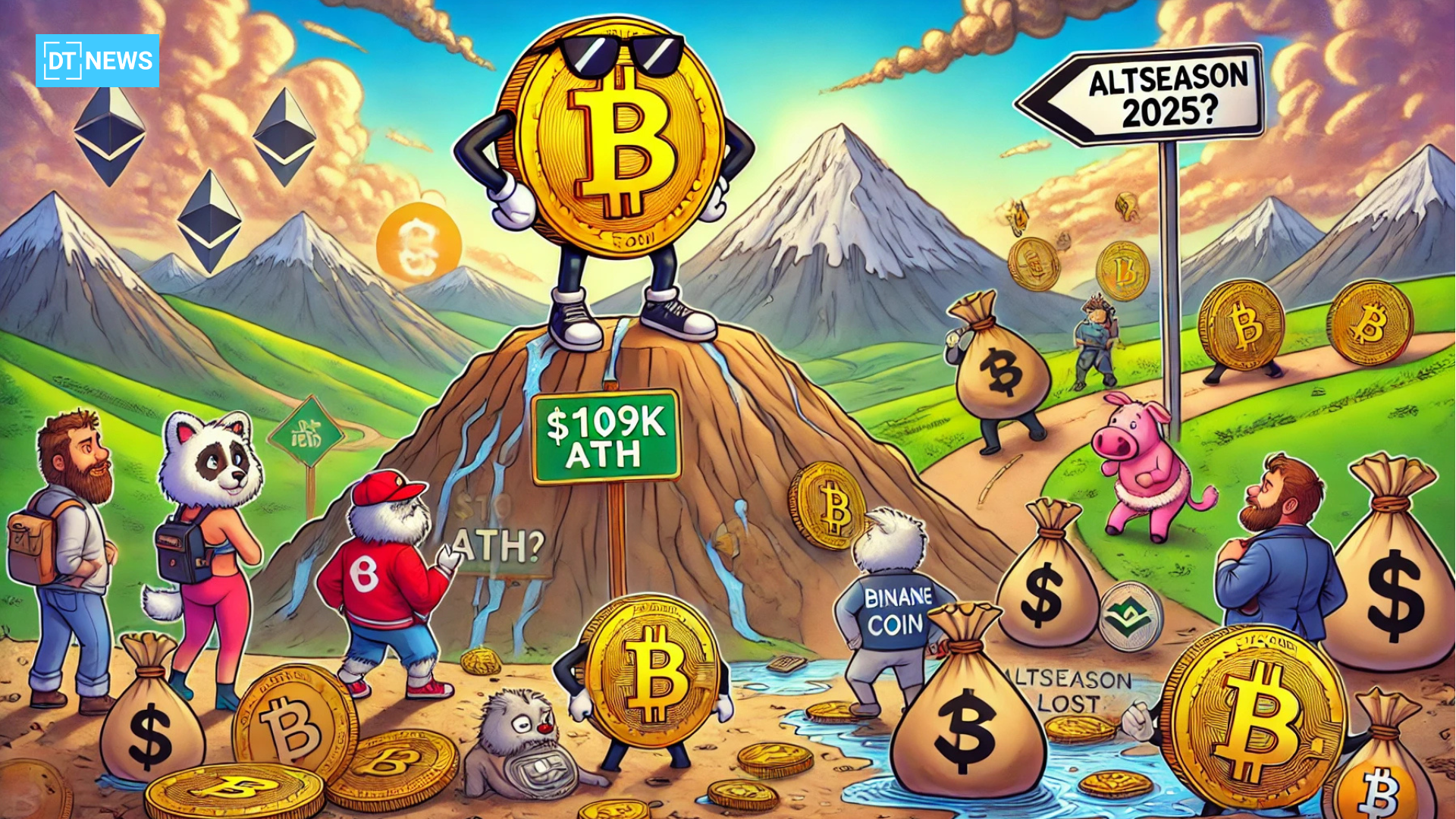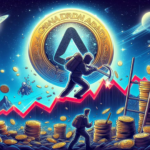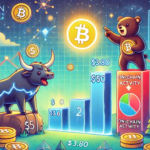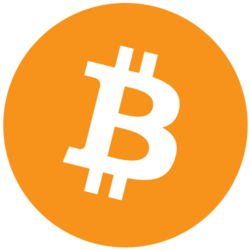2025 has ushered in a series of unexpected twists and turns. Following Bitcoin’s much-anticipated halving in April 2024, the crypto community braced for a surge, not just in Bitcoin’s value but also across the altcoins spectrum. While Bitcoin did not disappoint, soaring past the $100,000 mark to an all-time high of approximately $109,000, the altcoin market painted a more complex picture.
Bitcoin’s Meteoric Rise Post-Halving
Historically, Bitcoin halvings—events that reduce the reward for mining new blocks by half—have been pivotal moments, often leading to significant price appreciations. The 2024 halving was no exception. By the end of that year, Bitcoin had surged to unprecedented levels, driven by increased scarcity and heightened institutional interest.
Altcoins: A Mixed Bag of Performances
Contrary to the bullish expectations for a widespread “Altseason,” the performance of alternative cryptocurrencies has been varied. Notable exceptions like Solana (SOL) and Binance Coin (BNB) have demonstrated resilience and growth. Solana is priced at $196.59, down by 2.81%, while Binance Coin has risen by 1.77% to $649.81.
However, the broader altcoin market has faced challenges. Data from Glassnode indicates a decoupling between Bitcoin and altcoins, with the latter’s market capitalization decreasing by over $234 billion in the past two weeks. The dominance of altcoins has been on a decline since early 2024, reaching lows not seen since June 2023. This trend mirrors previous cycles, where significant altcoin rallies often occurred in the year following a Bitcoin halving. Given the current dynamics, some analysts suggest that a substantial altcoin season might be delayed until 2026.
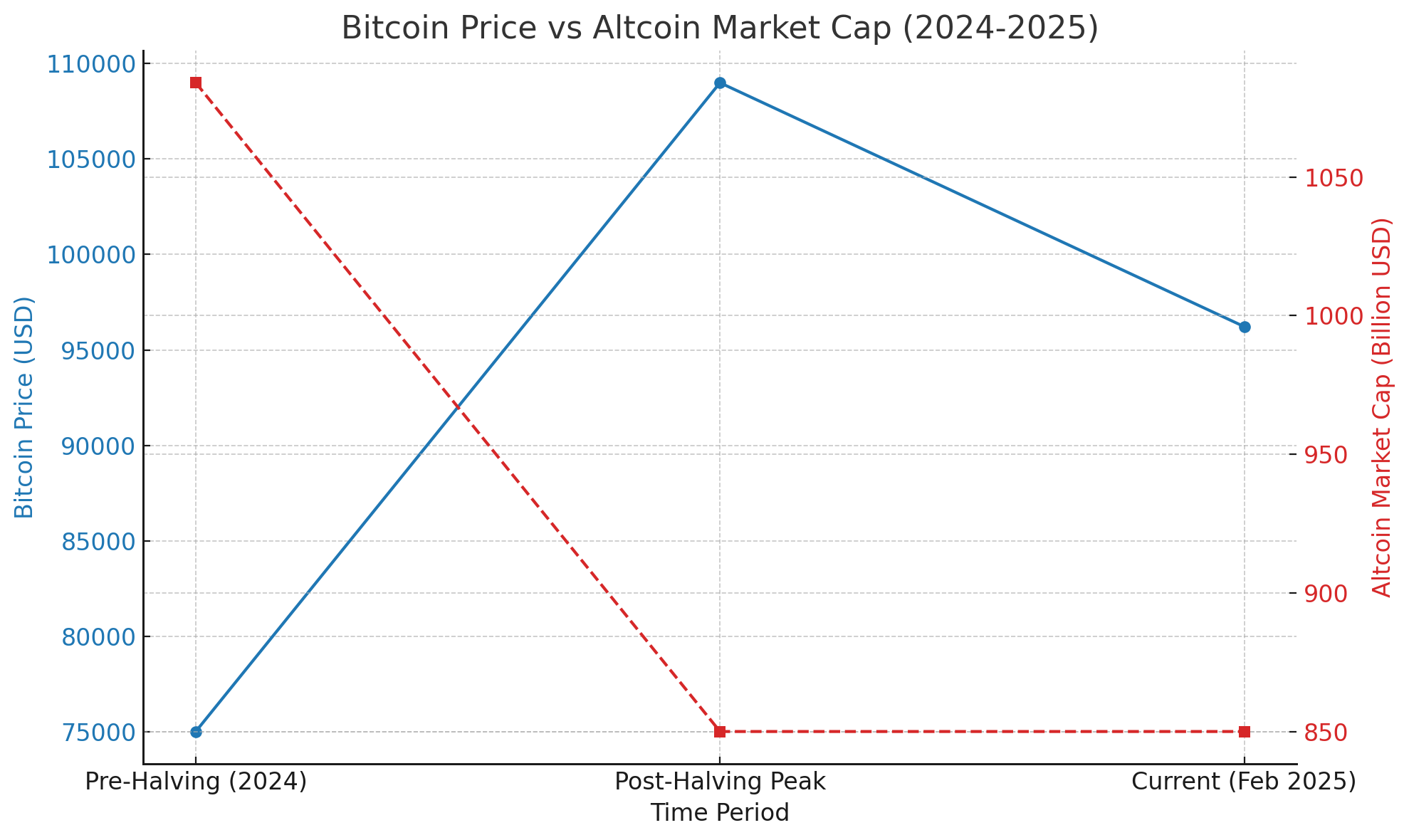
Market Dynamics and Investor Sentiment
Several factors contribute to the current state of the altcoin market. The proliferation of meme coins has siphoned liquidity, leaving top altcoins struggling to attract investment. Additionally, the altcoin market dominance has been declining since the start of 2024, testing June 2023 lows and marking the lowest point in the past four years. A similar pattern was observed during the last cycle, though the decline was quicker and more severe.
Reflecting on historical patterns, the significant rise in altcoin dominance did not occur until 2021, the year following the previous halving. By that time, Bitcoin had appreciated by 50% to 100% from its prior all-time high and continued its upward trajectory. Currently, the market dynamics appear more diverse, with altcoins underperforming compared to previous cycles.
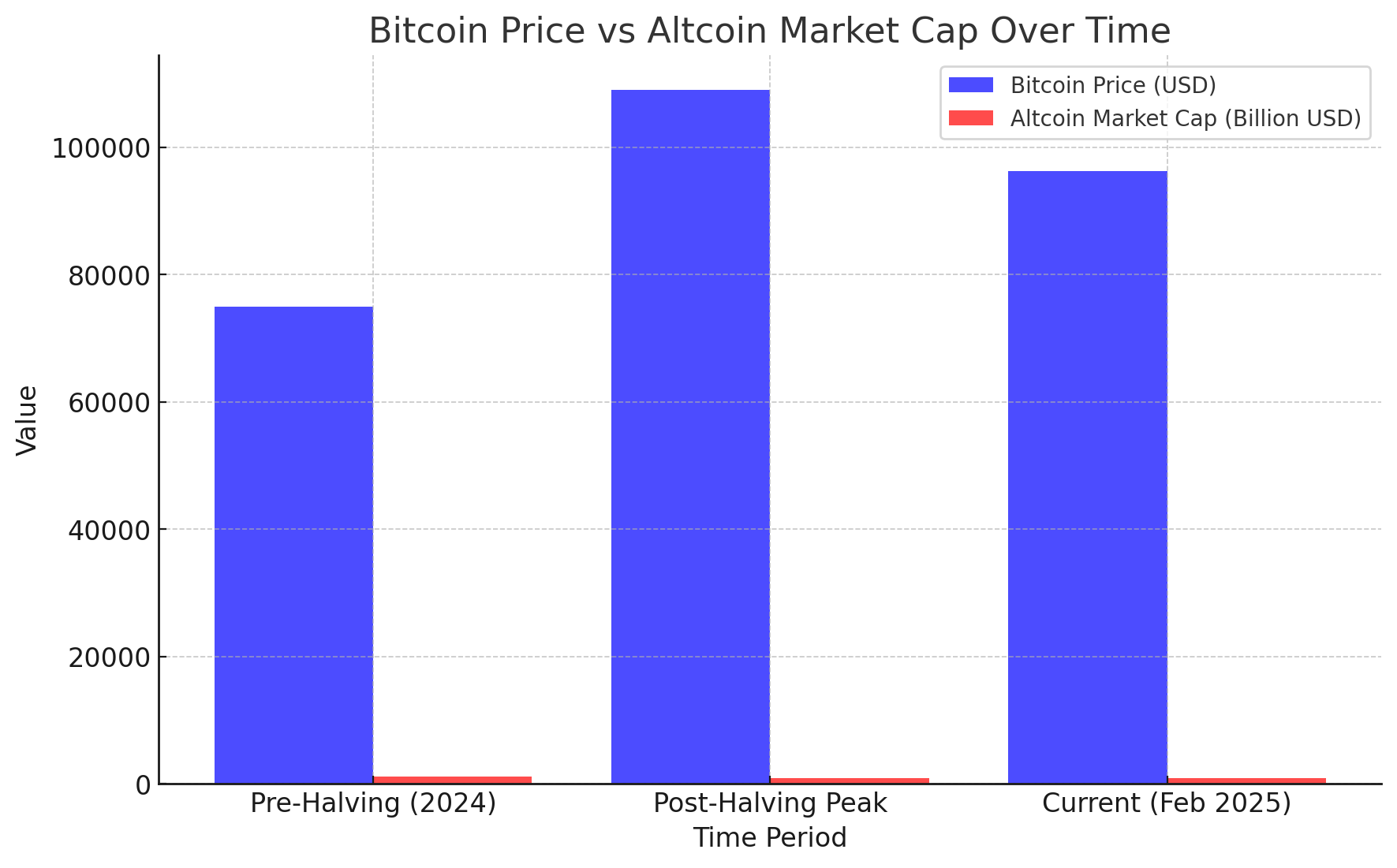
Looking Forward: Is Altseason on the Horizon?
Despite the current challenges, optimism remains among certain market analysts. The total market capitalization, excluding Bitcoin and Ethereum, is holding above $850 billion, a critical support level. This consolidation could precede a robust rebound, potentially leading to a more pronounced altseason compared to previous cycles.
A popular analyst, Moustache, does not believe that the Altseason is canceled as the levels continue to consolidate above the pivotal support. The total market capitalization, excluding BTC, is staying strong above the trend line, which has turned into strong support. After breaking above the descending broadening wedge, the levels are correcting, and hence, a rebound seems to be inevitable. Moreover, the analyst believes the upcoming altseason could be more monstrous than that of 2014-2018.
Conclusion
The cryptocurrency landscape in 2025 presents a tapestry of achievements and challenges. Bitcoin’s post-halving performance has been impressive, yet the anticipated altcoin surge remains elusive. As the market evolves, investors are advised to stay informed, exercise caution, and remain patient. The lessons from past cycles suggest that while delays may occur, the potential for significant altcoin growth remains a possibility in the future.
FAQs
What is Bitcoin halving?
Bitcoin halving is an event that occurs approximately every four years, reducing the reward for mining new blocks by half. This mechanism controls the supply of Bitcoin, making it more scarce over time.
Why didn’t altcoins surge after the 2024 Bitcoin halving?
Several factors contributed, including the diversion of liquidity to meme coins and a general decline in altcoin market dominance. Additionally, historical patterns suggest that significant altcoin rallies often occur in the year following a Bitcoin halving.
Which altcoins performed well post-2024 halving?
Notable performers include Solana (SOL) and Binance Coin (BNB), which have shown resilience and growth despite broader market challenges.
Is an altseason expected in the near future?
While current indicators show consolidation, some analysts remain optimistic about a potential altseason, possibly in 2026, based on historical trends and market dynamics.
How should investors approach the current crypto market?
Investors are advised to stay informed, exercise caution, and consider long-term strategies. Diversifying investments and understanding market cycles can help mitigate risks.
Glossary of Key Terms
1. Altcoin: Any cryptocurrency other than Bitcoin. Altcoins vary in function, use cases, and market performance.
2. Altseason: A period in the crypto market when altcoins outperform Bitcoin in terms of price appreciation and trading volume.
3. Bitcoin Halving: A scheduled event that occurs approximately every four years, reducing the reward for mining new Bitcoin blocks by half. This mechanism controls Bitcoin’s supply and historically leads to price surges.
4. Cryptocurrency:A digital or virtual currency that uses cryptographic techniques for security and operates on decentralized blockchain networks.
5. Decoupling: A situation where altcoins no longer move in correlation with Bitcoin’s price movements, indicating independent market behavior.
6. Market Capitalization (Market Cap): The total value of a cryptocurrency, calculated by multiplying the current price per coin by the total circulating supply.






































































































